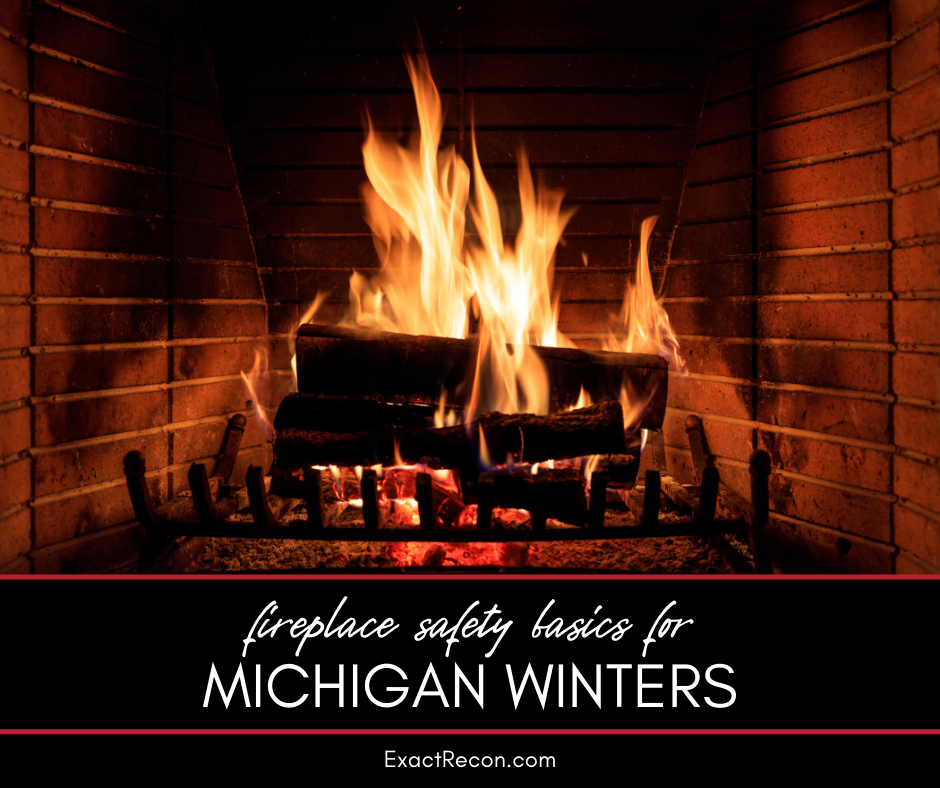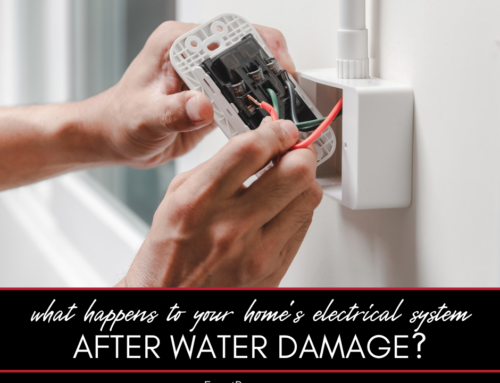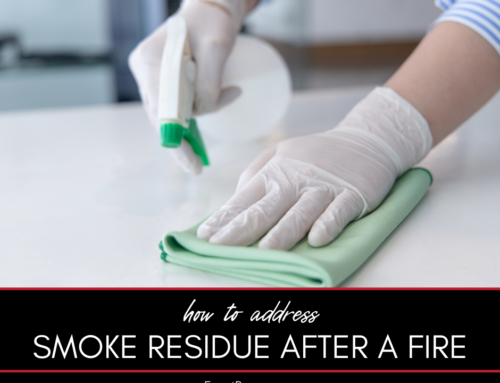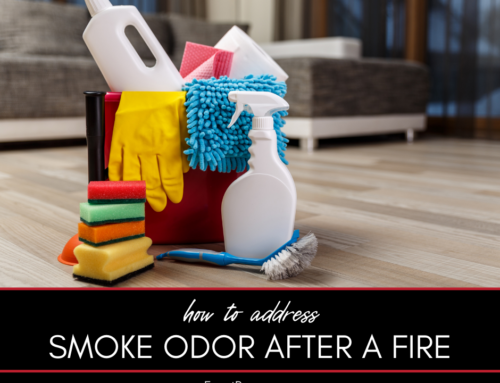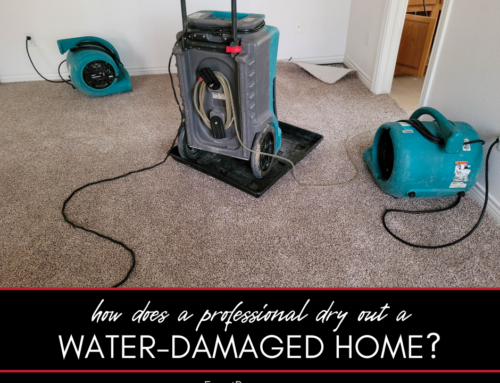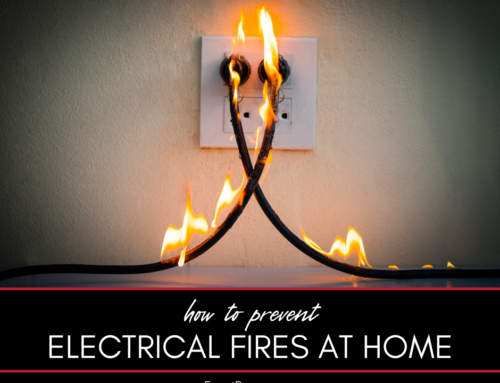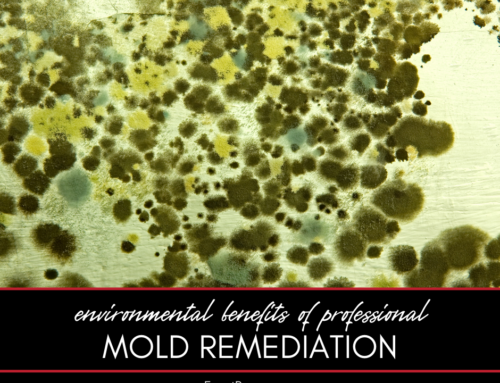Using a fireplace adds warmth and charm to Michigan winters, but it also requires special attention to safety. Fireplaces, whether wood-burning or gas, can be a fire hazard if not properly maintained and used. To help keep your home safe, here’s a complete guide to fireplace safety, covering maintenance, proper operation, and essential safety tips for the colder months.
Fireplace Safety Basics for Michigan Winters
Fireplace safety involves regular maintenance, proper use, and awareness of potential hazards. This guide explains the following:
- Understanding fireplace types and maintenance needs
- Practicing safe operation for wood and gas fireplaces
- Preparing your home for winter fireplace use
- Knowing how to prevent chimney fires
- Using essential tools and fire protection devices
Here’s a closer look at each.
Understanding Fireplace Types and Maintenance Needs
Each type of fireplace—whether wood-burning or gas—has specific maintenance requirements. Keeping your fireplace in good condition not only improves efficiency but also reduces the risk of fire damage.
- Wood-Burning Fireplaces: These require regular cleaning to remove soot and creosote, a flammable byproduct of wood combustion. Creosote buildup can lead to dangerous chimney fires if not removed. The U.S. Fire Administration recommends having your chimney inspected and cleaned by a professional annually. You can find more about chimney fire prevention from USFA’s guidelines on chimney safety.
- Gas Fireplaces: Gas fireplaces are generally easier to maintain but should still be inspected annually. Check for leaks, proper ventilation, and functioning gas connections. A certified technician can help identify and repair any potential issues to ensure safe operation.
An annual professional inspection is crucial for identifying and addressing any problems that might lead to fires or smoke damage.
Practicing Safe Operation for Wood and Gas Fireplaces
Safe operation is essential for reducing the risk of fireplace-related accidents. Follow these guidelines to ensure your fireplace is used safely:
- For Wood-Burning Fireplaces: Only burn seasoned hardwood to reduce creosote buildup and smoke production. Avoid using painted or treated wood, as these materials can release toxic fumes. Never use accelerants like lighter fluid or gasoline, as these can cause dangerous flare-ups.
- For Gas Fireplaces: Gas fireplaces should be vented according to manufacturer guidelines, and the glass doors should remain closed during operation. Make sure the fireplace is equipped with a carbon monoxide detector nearby to alert you of any dangerous gas buildup. Learn more about CO safety from the Centers for Disease Control and Prevention.
Always extinguish the fire completely before going to bed or leaving the house. This simple step can help prevent both accidental fires and exposure to harmful gases.
Preparing Your Home for Winter Fireplace Use
Before Michigan’s winter sets in, prepare your home to ensure a safe fireplace experience:
- Check Your Smoke Alarms: Install smoke alarms on every floor, especially near sleeping areas. Test them monthly and replace the batteries twice a year. Smoke alarms play a critical role in alerting you to any fire hazards that may arise. The National Fire Protection Association has helpful guidance on smoke alarm placement and maintenance.
- Use a Fireplace Screen: Fireplace screens prevent embers from escaping and protect your home from accidental burns or carpet damage. Choose a sturdy screen that covers the entire opening of your fireplace.
- Have a Fire Extinguisher Nearby: Place a fire extinguisher within reach and ensure everyone in the household knows how to use it. This precaution is especially important for wood-burning fireplaces where errant sparks can quickly ignite nearby materials.
Taking these preventive measures helps to create a safer environment and reduces the risk of needing disaster cleanup after a fire incident.
Knowing How to Prevent Chimney Fires
Chimney fires can occur when creosote builds up on chimney walls, and they can be both dangerous and difficult to contain. Here’s how to minimize the risk:
- Schedule Regular Cleanings: According to the U.S. Environmental Protection Agency, regular chimney cleaning is essential to prevent creosote buildup. For homes with frequent fireplace use, it may be necessary to clean the chimney more than once a year. For more information, see the EPA’s guidelines on wood stove safety.
- Watch for Warning Signs: Common signs of a chimney fire include loud cracking or popping sounds, dense smoke, and an intense, hot smell. If you notice any of these, leave the house immediately and call the fire department.
- Burn Only Clean Wood: Using seasoned hardwood reduces creosote formation, making your chimney safer and your fire cleaner.
Preventing chimney fires involves routine cleaning and knowing what to look for to catch problems early.
Using Essential Tools and Fire Protection Devices
Having the right tools and safety devices on hand makes fireplace use safer and more manageable.
- Fireplace Tools: Invest in a high-quality set of fireplace tools, including tongs, a poker, and a shovel. These tools help you manage the fire safely and clean up ashes.
- Carbon Monoxide Detectors: A CO detector near your fireplace and in sleeping areas is essential for homes with gas fireplaces. Carbon monoxide is odorless and invisible, making detectors critical for early warning.
- Ash Disposal: For wood-burning fireplaces, wait at least 24 hours after a fire before removing ashes. Store them in a metal container and keep it away from your home or other combustible materials.
These tools and safety precautions help prevent both fire and smoke damage, protecting your home and family throughout Michigan’s colder months.
FAQ About Fireplace Safety Basics for Michigan Winters
Check out these commonly asked questions about fireplace safety. If you don’t see the answers you’re looking for here, please call our office and we’ll find you the answers you need.
How Often Should I Clean My Chimney?
For frequent users of wood-burning fireplaces, an annual chimney cleaning is recommended. In some cases, if you burn wood daily during winter, cleaning may be required more often to prevent creosote buildup.
Can I Use My Gas Fireplace Without a Carbon Monoxide Detector?
No, a carbon monoxide detector is essential if you have a gas fireplace. CO is a serious health risk, and a detector can alert you to dangerous levels before symptoms appear.
What Type of Wood Should I Burn in My Fireplace?
Burn only seasoned hardwoods, as they produce less smoke and creosote. Avoid burning softwoods, wet wood, or treated wood, which can create more smoke and increase creosote buildup.
How Can I Tell if My Chimney Needs Cleaning?
Signs of a dirty chimney include poor ventilation, smoke entering the room, or visible creosote deposits inside the chimney. If you experience any of these, schedule a professional inspection.
Should I Leave the Fireplace Unattended?
Never leave a fireplace burning unattended. Always extinguish the fire completely before leaving the house or going to bed, as leaving a fire unsupervised increases the risk of accidental fire damage.
Do You Need a Disaster Remediation Expert in Washtenaw County or Jackson County?
If your home has already been damaged, we can help. Check out our services and call Exact Recon for your free disaster remediation quote today. We offer:
- Water damage restoration
- Fire damage restoration
- Mold removal and remediation
- Fire and smoke restoration
- Sewer cleanup and disinfecting
- Reconstruction
- Wind and storm damage repair

